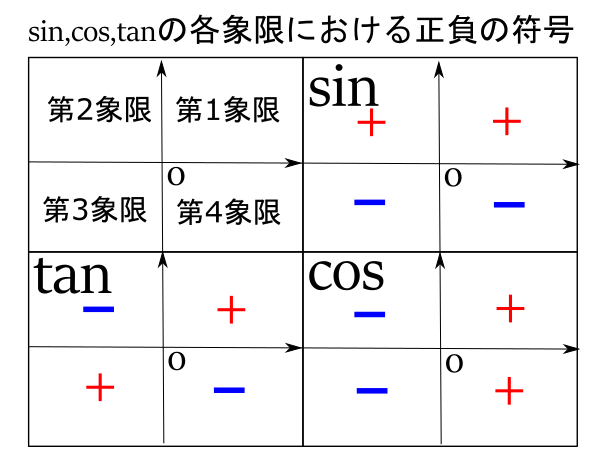こんにちは。今回は180![]() を越える場合の三角関数について書いておきます。
を越える場合の三角関数について書いておきます。
高1と何ら変わらない
三角関数の定義は次のようでした。
以下のような半径![]() の円があって, その円周上の点をP(
の円があって, その円周上の点をP(![]() ,
, ![]() )とする。
)とする。![]() とするとき,
とするとき, ![]() ,
, ![]() ,
, ![]() は以下の式で求められます。
は以下の式で求められます。

定義
![]()
ただし,
例題をやってみる
今回この定義が引き継がれることになります。したがって, ![]() とした場合を考えると, 次のように円を書いて考えることになります。
とした場合を考えると, 次のように円を書いて考えることになります。

このとき, 点Pの座標は, P
各象限でのsin,cos,tanの符号
また, 各象限での![]() の符号は次のようになります。
の符号は次のようになります。

 数樂管理人のブログ
数樂管理人のブログ 

